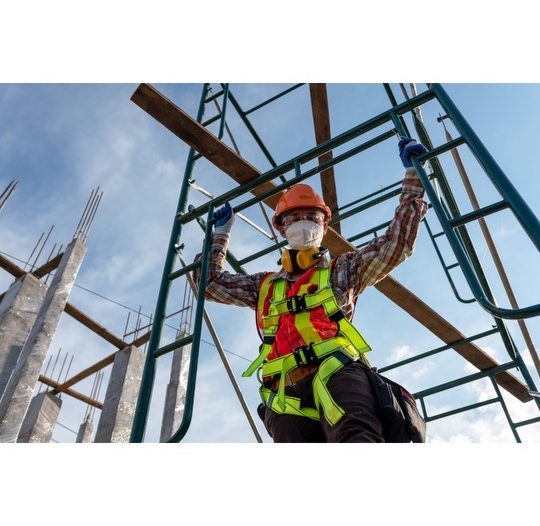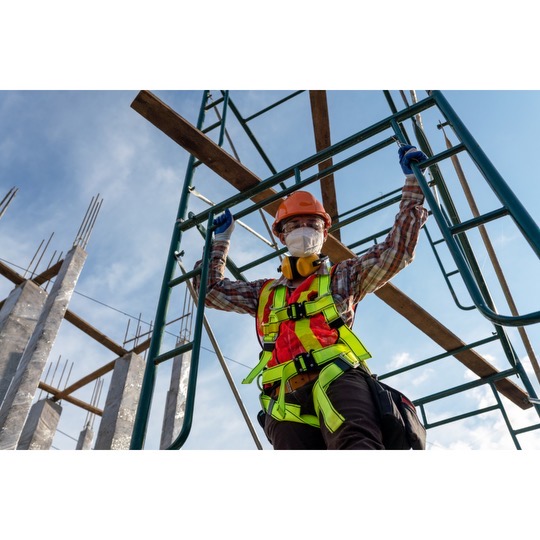
On December 23, 2023 the Pennsylvania Supreme Court decided Sullivan v. Werner Company, in which it ruled that evidence of compliance with industry standards is inadmissible in Pennsylvania Products Liability cases. In doing so, the Supreme Court doubled down on its commitment to the Section 402A of the Second Restatement of Torts being the law of the land in Pennsylvania regarding defective and dangerous product injuries.
(Incidentally, both the Sullivan Trial and appeal were litigated by good friends of mine and excellent Trial Lawyers at the Philadelphia firm of Laffey Bucci Kent who did an amazing job for both their clients and the whole Pennsylvania Plaintiffs’ bar!)

The Facts of the Sullivan v. Werner Company Case
Michael Sullivan was seriously injured on a jobsite when the platform of a six-foot tall mobile scaffold collapsed which caused him to fall through the scaffold onto the ground. The platform of the scaffold was secured to the frame by spring-loaded pins.
Sullivan sued the manufacturer of the scaffold, Werner Company, alleging that the scaffold was defective and dangerous because the design was such that the pins could inadvertently rotate during normal use of the scaffold which could cause the deck to collapse and the user to be injured.
At Trial, Werner Company tried to introduce evidence that the design of the scaffold complied with federal Occupational Safety and Health Administration (OSHA) regulations and American National Standard Institute (ANSI) standards which would support their argument that the scaffold was reasonably safe and not dangerous.
Sullivan filed a Motion in Limine to preclude the admission of the safety regulations and industry standards, arguing that the evidence was not permitted because Pennsylvania follows the Second Restatement regarding Products Liability which requires a focus on the product itself to determine whether it is defective and dangerous, rather than the conduct of the manufacturer such as its compliance with industry standards.
The Trial Judge sided with Sullivan and precluded the OSHA/ANSI regulations and standards evidence. The Jury found that the scaffold was defective and awarded Sullivan $2.5 Million in compensation for his injuries and damages.
Werner Company appealed the Jury Verdict, claiming that the Judge erred in failing to permit evidence of industry standards. Sullivan won the appeal first in the Pennsylvania Superior Court and now in the Pennsylvania Supreme Court.
How is a Product Defective Under Pennsylvania Law and in the Sullivan Case?
In the Sullivan v. Werner Company case, the Pennsylvania Supreme Court reaffirmed the fact that Pennsylvania follows Section 402A of the Restatement Second of Torts regarding Products Liability Law which states the following:
(1) One who sells any product in a defective condition unreasonably dangerous to the user or consumer or to his property is subject to liability for physical harm thereby caused to the ultimate user or consumer, or to his property, if
(a) the seller is engaged in the business of selling such a product, and
(b) it is expected to and does reach the user or consumer without substantial change in the condition in which it is sold.
(2) The rule stated in Subsection (1) applies although:
(a) the seller has exercised all possible care in the preparation and sale of this product, and
(b) the user or consumer has not bought the product from or entered into any contractual relation with the seller.
A product can be defective because it is improperly designed or manufactured, or if it does not contain appropriate instructions or warnings.
In the Sullivan v. Werner Company case, Sullivan alleged that the scaffold was defectively defective designed under the Risk/Utility Theory.
Under Risk/Utility, the Jury was given the following instructions:
Under the Risk/Utility test, a product is defective if a reasonable person would conclude that the possibility and seriousness of harm outweighed the burden or cost to the manufacturer of making the product safe.
To decide whether the product is defective under this test, you should consider the following factors: The usefulness and desirability of the product, its utility to the user and to the public as a whole, the safety aspects of the product, the likelihood that it will cause injury, the availability of a substitute product which would meet the same need and not be as unsafe, the manufacturer’s ability to eliminate the unsafe character of the product without impairing the usefulness or making it too expensive to maintain its utility, the user’s ability to avoid danger by the exercise of care in the use of the product, the user’s anticipated awareness of the dangers inherent in the product and their availability, because of the general public knowledge of the obvious condition of the product or the existence of suitable warnings or instructions.
You may not consider any negligence, that is lack of due care, by Plaintiff, Michael Sullivan, when performing this test for defectiveness. Rather, you must consider what product a reasonable manufacturer would design, given all the factors listed above.
Why Did the Supreme Court Decide that Industry Standards Should not be Presented to the Jury?
Ultimately, the Supreme Court held that the Trial Court properly excluded the OSHA/ANSI industry standards from being presented to the Jury during the Trial.
In doing so, the Supreme Court reasoned that compliance with industry standards relates to the conduct of the manufacturer which, in a Negligence case, would be proper because the legal standard is whether the manufacturer used “Reasonable Care” in the design of the product.
However, Sullivan was not pursing a claim for Negligence. Instead, he was alleging a violation of Product Liability law under the Risk/Utility Test, claiming that the scaffold design was defective and unreasonably dangerous because the pins could shift and the scaffold deck could collapse during normal use.
In its decision, the Supreme Court reasoned that allowing industry standards evidence would improperly introduce Negligence concepts into a Product Liability Trial. The focus of a Product Liability case is the “characteristics of the Product” and whether or not the Product is defective and dangerous, not the conduct of the manufacturer, like compliance with industry standards.
The Supreme Court stated that “[c]ompliance evidence does not prove any characteristics of the product; rather it diverts attention from the product’s attributes to both the manufacturer’s conduct and whether a standards-issuing organization would consider the product to be free from defects. Neither of these considerations is pertinent to a risk-utility analysis.”
This holding by the Supreme Court is pivotal, both because it ends the open issue of the admissibility of industry standards in Pennsylvania Products Liability cases and because the Supreme Court reaffirmed the continued use of Section 402A of the Restatement Second as the law of the land in Pennsylvania.

Tim Rayne is a Pennsylvania Personal Injury Lawyer with the law firm MacElree Harvey. For over 25 years, Tim has been helping injured accident victims understand their legal rights and receive fair treatment from insurance companies. Tim offers Free Consultations in either his West Chester or Kennett Square, PA offices and also meets with clients at their homes or remotely via Zoom or FaceTime. Tim can be contacted at 610-840-0124 or trayne@macelree.com or you can check out his website at www.TimRayneLaw.com.

Leave a Reply